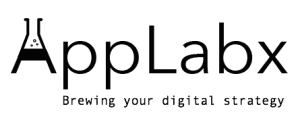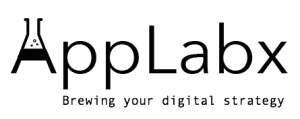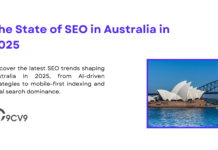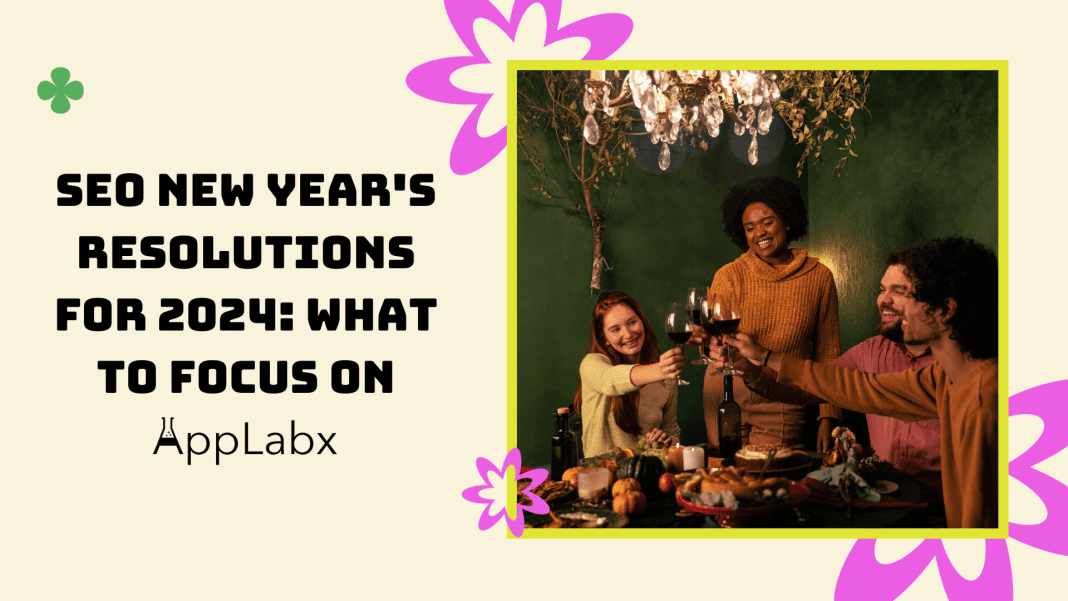Key Takeaways
- Mobile-Centric Strategies: Elevate your SEO game in 2024 by prioritizing mobile-first optimization, ensuring your website aligns seamlessly with the preferences of an increasingly mobile audience.
- Content Excellence Reigns: Craft compelling and authoritative content to uphold E-E-A-T principles, signaling to both users and search engines that your expertise, authoritativeness, and trustworthiness are the bedrock of your digital presence.
- Local Dominance Matters: Dominate local search results by mastering Local SEO Optimization, from optimizing Google My Business profiles to fostering positive reviews and engaging with the community—ensuring your business shines in its local ecosystem.
In the ever-evolving realm of digital marketing, where algorithms are in constant flux and user behaviors undergo dynamic shifts, the turn of the year is not just a time for personal resolutions but a pivotal moment for businesses and digital marketers to reassess, adapt, and fortify their strategies.
As we stand on the threshold of 2024, the world of Search Engine Optimization (SEO) beckons with new challenges and opportunities, making it imperative for practitioners to embark on a journey of strategic recalibration.

SEO New Year’s Resolutions For 2024
This blog serves as your compass in navigating the uncharted territories of SEO in the coming year.
As we bid adieu to the nuances of 2023, a retrospective glance reveals a landscape reshaped by algorithmic updates, emerging technologies, and ever-heightening user expectations.
It’s a reminder that staying ahead in the digital race requires not just resilience but a proactive approach to understanding and leveraging the pulse of the SEO sphere.
The Comprehensive Guide
In this comprehensive guide, we will dissect the SEO New Year’s resolutions for 2024, illuminating the crucial focal points that demand your attention.
Beyond the clichéd aspirations of personal growth and well-being, we delve into the nuanced resolutions that will empower your digital presence and propel your website to the forefront of search engine rankings.
The Holistic Strategy
As the digital ecosystem becomes increasingly intricate, search engines are becoming more discerning, demanding, and sophisticated.
The days of merely optimizing for keywords are long gone;
2024 demands a holistic strategy that encapsulates mobile-first indexing, content relevance, voice search optimization, and a robust technical foundation.
The dynamic interplay of these elements forms the crux of our SEO resolutions, and throughout this guide, we will equip you with the knowledge and actionable insights needed to not only adapt but thrive in the competitive online arena.
The Trajectory of Digital Evolution
But why should you care about New Year’s resolutions for SEO, and what makes 2024 particularly noteworthy?
The answer lies in the trajectory of digital evolution.
With each passing year, search engines become more adept at understanding user intent, rewarding websites that align with searcher needs. Your SEO strategy is no longer a static set of tactics; it’s a living, breathing entity that requires constant nourishment and evolution.
Join us on this journey of exploration and transformation as we unravel the intricate tapestry of SEO New Year’s resolutions for 2024.
From the pivotal role of mobile optimization to the nuances of E-E-A-T (Expertise, Experience, Authoritativeness, Trustworthiness), we leave no stone unturned in this quest for digital supremacy.
So, buckle up, fellow digital pioneers, as we embark on a voyage through the realms of SEO, armed with insights and resolutions that will shape the destiny of your online presence in the coming year.
But, before we venture further, we like to share who we are and what we do.
About AppLabx
From developing a solid marketing plan to creating compelling content, optimizing for search engines, leveraging social media, and utilizing paid advertising, AppLabx offers a comprehensive suite of digital marketing services designed to drive growth and profitability for your business.
AppLabx is well known for helping companies and startups use content marketing to drive web traffic to their websites and web apps.
At AppLabx, we understand that no two businesses are alike. That’s why we take a personalized approach to every project, working closely with our clients to understand their unique needs and goals, and developing customized strategies to help them achieve success.
If you need a digital consultation, then send in an inquiry here.
SEO New Year’s Resolutions For 2024: What To Focus On
- Mobile-First Optimization
- Content Quality and Relevance
- Voice Search Optimization
- Video SEO
- E-E-A-T (Expertise, Experience, Authoritativeness, Trustworthiness)
- Technical SEO Audit
- Local SEO Optimization
1. Mobile-First Optimization
In an era where the majority of online interactions occur on mobile devices, the significance of mobile-first optimization cannot be overstated.
As we enter 2024, the mobile landscape continues to shape user experiences and influence search engine rankings, making it a cornerstone for any robust SEO strategy.

The Mobile Dominance Paradigm
The proliferation of smartphones has drastically altered user behaviour, with mobile devices accounting for a substantial share of global internet usage.
In the first quarter of 2023, mobile devices (excluding tablets) generated 58.33 per cent of global website traffic, a testament to the undeniable shift towards mobile-centric digital engagement.
The ramifications of this trend extend to search engines, with Google and other major players prioritizing mobile-first indexing to reflect the prevalent user preferences.
Responsive Web Design (RWD):
- Example: The White House’s website adopts a responsive design, ensuring a seamless user experience across devices.
- Google recommends responsive web design because it’s the easiest design pattern to implement and maintain, simplifying the indexing and ranking process.

Page Loading Speed:
- Example: Amazon optimized its mobile site for speed, resulting in faster page loading times and improved user satisfaction.
- As page load time goes from 1 second to 3 seconds, the probability of bounce increases by 32%.
Mobile-Friendly Testing Tools:
- Example: The Mobile-Friendly Test by Google provides actionable insights for optimizing websites for mobile devices.
- When they visited a mobile-friendly site, 74% of people said they were more likely to return to that site in the future.
Google’s Mobile-First Indexing: Decoding the Algorithmic Shift
Google’s mobile-first indexing is more than just a trend; it’s a fundamental shift in the way search engines evaluate and rank websites.
With mobile-first indexing, Google predominantly uses the mobile version of a website for indexing and ranking, acknowledging the importance of delivering results that cater to the mobile-centric user base.
Embracing AMP (Accelerated Mobile Pages):
- Example: Forbes implemented AMP pages, resulting in faster loading times and improved visibility in mobile search results.
- According to Google, webpages built with AMP load an average of four times faster and use 10 times less data than equivalent non-AMP pages.
User Engagement and Retention:
- Example: The Washington Post implemented AMP, witnessing a 23% increase in mobile search users who returned within 7 days.
- 53% of visits are abandoned if a mobile site takes longer than 3 seconds to load.
User-Centric Content: Crafting for the Mobile Audience
Beyond technical considerations, mobile-first optimization extends to content creation tailored for mobile consumption.
This involves understanding user intent, designing concise yet impactful content, and utilizing mobile-friendly formats.
Structured Data Markup:
- Example: IMDb uses structured data markup to enhance its search results, providing users with more informative snippets.
- According to a study, good schema markups can increase your click-through rate by 30%.
Thumb-Friendly Navigation:
- Example: Instagram employs a thumb-friendly interface, making it easy for users to navigate with one hand.
- 94% of users stated that easy navigation is the most important website feature.
2. Content Quality and Relevance
In the dynamic realm of SEO, where content reigns supreme, the adage “Content is King” resonates more than ever in 2024.
Elevating your content game isn’t just about meeting word count quotas; it’s about delivering value, and relevance, and meeting the nuanced needs of your audience.
Let’s dive into the intricacies of content quality and relevance and explore the strategies that will set the stage for SEO success in the coming year.

Understanding the Landscape: The Shift Towards User Intent
As search engines become increasingly sophisticated, the focus has shifted from keyword-centric content to user-centric content that aligns with search intent.
Google, in particular, has refined its algorithms to prioritize content that best satisfies user queries.
User Intent and Content Creation:
Example: HubSpot’s blog on “8 Steps to Create a Complete Marketing Strategy in 2023” doesn’t just list steps but provides actionable insights and templates, aligning with the intent of users seeking comprehensive guidance.

Strategies for High-Quality Content Creation
Creating content that resonates with both users and search engines involves a strategic approach.
It’s about more than just keywords; it’s about context, value, and the overall user experience.
E-E-A-T (Expertise, Experience, Authoritativeness, Trustworthiness):
- Example: Mayo Clinic’s health articles not only provide accurate medical information but are backed by the institution’s reputation for medical expertise.
- Google’s Search Quality Evaluator Guidelines emphasize the significance of E-E-A-T, influencing page rankings.
Multimedia Integration:
- Example: National Geographic’s website seamlessly integrates multimedia elements like videos, images, and interactive maps to enhance the overall content experience.
- Content with good images gets 94% more views than those without.
Long-Form Content:
- Example: Neil Patel’s in-depth guides, such as “The Advanced Guide to Custom Content Marketing,” provide exhaustive information, catering to users seeking comprehensive insights.
- According to Backlinko, longer content does tend to rank best in search engines.

The Role of Relevance in SEO Success
Relevance isn’t a static concept; it evolves with user preferences, search trends, and industry dynamics.
Aligning your content with what your audience seeks ensures sustained visibility and engagement.
Audience Persona Research:
- Example: Airbnb’s blog content is tailored not only to travellers but also to hosts, providing relevant insights and resources for both segments.
- Aligning content to specific stages of the buyer’s journey yields 73% higher average conversion rates for marketers who do so, versus marketers who do not.
Evergreen Content:
- Example: Wikipedia’s evergreen content, such as historical articles, continues to attract traffic over time, showcasing the enduring value of timeless information.
- Evergreen content contributes to consistent traffic, as it remains relevant and valuable over extended periods.
The Intersection of SEO and Content Quality
As search algorithms evolve, the synergy between content quality and SEO becomes more evident.
High-quality content not only satisfies users but also aligns with the criteria search engines use to determine rankings.
Featured Snippets Optimization:
- Example: The Spruce’s article on “How to Clean a Keurig Coffee Maker” is structured effectively, earning it a featured snippet for the search query.
- Featured snippets get more than 8% of all clicks, and snippets with high-traffic keywords witness an increase in CTR of more than 114%.
User Engagement Metrics:
- Example: Buzzfeed’s engaging listicles and quizzes not only drive traffic but also contribute to longer average session durations, a metric considered by search engines.
- Pages with higher engagement, measured by time on page and low bounce rates, often rank higher in search results.
3. Voice Search Optimization
In an era where technological advancements redefine how we interact with information, voice search has emerged as a game-changer.
As we step into 2024, the landscape of SEO evolves once again, with voice search optimization taking centre stage.
This comprehensive guide explores the nuances of voice search, its impact on SEO, and strategies to ensure your digital presence resonates seamlessly with the voice-activated revolution.

The Rise of Voice Search: A Paradigm Shift in User Behavior
Voice-activated virtual assistants and smart speakers have become integral parts of our daily lives, reshaping the way users seek information.
Understanding the dynamics of voice search is pivotal for adapting your SEO strategy to meet the evolving needs of users.
The Proliferation of Voice-Activated Devices:
- Example: Amazon’s Alexa, Google Assistant, and Apple’s Siri have become household names with voice-activated assistants for various tasks.
- Forecasts suggest that by 2024, the number of digital voice assistants will reach 8.4 billion units – a number higher than the world’s population.
Changing Search Behavior:
Example: Users are more likely to phrase voice queries as natural language questions, such as “What’s the weather like today?” rather than using concise keywords.
Optimizing Content for Voice Queries
Adapting your content to align with the conversational nature of voice queries is a fundamental aspect of voice search optimization. Understanding the intricacies of how users formulate voice queries is key.
Long-Tail Keywords and Natural Language:
- Example: Instead of optimizing for “best Italian restaurants,” consider incorporating long-tail keywords like “What are the best Italian restaurants near me?” to match common voice search patterns.
- Long-tail keywords often mirror the natural language used in voice searches, contributing to higher search engine rankings.
Structured Data Markup for Featured Snippets:
- Example: The use of structured data markup can enhance the chances of your content being featured as a rich snippet, which is often read out loud by voice-activated devices.
- Featured snippets prominently display your content at the top of search results.
Local SEO and Voice Search
Voice searches often have a local intent, with users seeking information about nearby businesses or services.
Optimizing for local voice searches is crucial for businesses aiming to capture local audiences.
Google My Business Optimization:
- Example: When users inquire about local businesses using voice search, Google often pulls information directly from Google My Business listings.
- 46% of voice search users look for a local business daily.
Location-Specific Keywords:
Example: Incorporate location-specific keywords in your content, such as “best coffee shop in [city],” to cater to users making location-based voice queries.
Technical Considerations for Voice Search Optimization
Beyond content, technical optimizations play a crucial role in ensuring your website is conducive to voice search interactions.
Mobile Optimization:
- Example: Domino’s Pizza optimized its mobile website, allowing users to place voice-activated orders through virtual assistants.
- Google prioritizes mobile-friendly websites, and this preference extends to voice search results.
Page Speed Optimization:
- Example: The Weather Channel improved its page loading speed, ensuring that users receive quick and relevant voice responses to weather queries.
- Voice search results tend to load significantly faster than most web pages, aligning with the user expectation for immediate responses.
The Future of Voice Search and SEO
As voice search continues to gain momentum, staying ahead of the curve requires not only current optimizations but a forward-thinking approach that anticipates future trends.
Integration with AI and Natural Language Processing:
- Example: Google’s BERT algorithm employs natural language processing to better understand user queries and deliver more accurate results.
- As AI technologies advance, integrating them into your content strategy will be crucial for maintaining relevance in voice search.
Multilingual Voice Search Optimization:
- Example: Microsoft’s Cortana and Google Assistant offer multilingual support, recognizing the global nature of voice search.
- Businesses catering to multilingual audiences must optimize for voice search in multiple languages to remain competitive.
4. Video SEO
As the digital landscape continues to evolve, video content stands out as a powerful medium, captivating audiences and reshaping online experiences.
In the realm of SEO, understanding the intricacies of Video SEO is not just beneficial—it’s imperative for businesses aiming to thrive in 2024.
This comprehensive guide explores the strategies, optimizations, and industry best practices that will propel your video content to the forefront of search engine results.

The Dominance of Video Content in the Digital Sphere
In an era dominated by visual storytelling, video content has emerged as a frontrunner in engaging and retaining online audiences.
Understanding the significance of video in the SEO landscape sets the stage for strategic Video SEO implementation.
Explosive Growth of Video Consumption:
- Example: YouTube is the second largest search engine in the world after Google, with over 2 billion logged-in monthly users. Brands like Tasty on YouTube have leveraged video content, accumulating millions of subscribers through engaging and shareable recipe videos.
- At the end of 2022, online videos reached 93 per cent of the global digital population.
Video’s Impact on User Engagement:
- Example: Facebook’s algorithm prioritizes video content, leading to higher organic reach for videos compared to other post types.
- Pages with videos are 53 times more likely to rank on the first page of Google search results.
Optimizing Video Content for Search Engines
To harness the full potential of video content, a strategic approach to Video SEO is essential.
This involves optimizing various elements to ensure search engines can understand, index, and rank your videos effectively.
Keyword Research for Video Titles and Descriptions:
- Example: TED’s YouTube channel strategically uses compelling titles and detailed video descriptions, incorporating relevant keywords to enhance search visibility.
- Craft unique and descriptive titles using relevant keywords to increase the likelihood of ranking higher in the search results.
Transcript Utilization for Accessibility and SEO:
- Example: BBC News provides transcripts for its video content, catering to both users with accessibility needs and search engines indexing textual content.
- Transcripts contribute to improved SEO as search engines can crawl and index textual content, enhancing the video’s discoverability.
The Role of Thumbnails and Visual Appeal
In the realm of video content, the first impression often comes from the thumbnail. Optimizing visual elements ensures that your videos stand out in search results and entice users to click.
Creating Engaging Thumbnails:
- Example: Netflix’s YouTube channel uses vibrant and captivating thumbnails to entice users into clicking on their trailer videos.
- Compelling thumbnails possess the ability to captivate viewers’ attention, significantly increasing the likelihood of them clicking on the video.
Video Quality and Production Values:
Example: National Geographic’s YouTube channel consistently delivers high-quality video content, contributing to a positive viewer experience and prolonged engagement.

Leveraging Video Metadata and Schema Markup
To enhance the contextual understanding of your videos, leveraging metadata and schema markup becomes crucial.
These elements provide additional information to search engines, improving the accuracy of video indexing.
Metadata Optimization:
- Example: Vimeo allows users to add comprehensive metadata, including video titles, descriptions, and tags, optimizing content for search visibility.
- Well-optimized metadata contributes to improved search rankings and visibility.
Schema Markup for Video Content:
- Example: Schema.org’s VideoObject markup helps define video elements, providing search engines with specific details like duration, thumbnail, and embed URL.
- Implementing video schema markup enhances the likelihood of rich snippets, improving the visibility of video content in search results.
Platform-Specific Optimization for YouTube and Beyond
Each video-sharing platform has its unique algorithms and ranking factors. Tailoring your Video SEO strategy to specific platforms is essential for maximizing reach and engagement.
YouTube Optimization:
- Example: MrBeast’s YouTube channel consistently optimizes video titles, descriptions, and tags, contributing to the channel’s massive subscriber base and high viewership.
- YouTube’s algorithm rewards content that keeps users engaged, making optimization crucial for discoverability.
Cross-Platform Syndication:
- Example: Buzzfeed repurposes video content for various platforms, customizing captions and formats to align with the preferences of audiences on different platforms.
- Tailoring videos for specific platforms expands audience reach and engagement possibilities.
The Influence of User Engagement Metrics
Beyond initial clicks, user engagement metrics play a pivotal role in Video SEO. Platforms prioritize videos that keep users engaged, encouraging creators to focus on content that resonates with their audience.
Watch Time and Session Duration:
- Example: TED Talks consistently garner high watch times, indicating sustained viewer engagement and contributing to the channel’s success.
- A long dwell time correlates positively with high search rankings, making it a crucial metric for Video SEO.
Social Signals and Shares:
- Example: Red Bull’s extreme sports videos often go viral, accumulating high shares and social signals, contributing to increased visibility and engagement.
- Social signals, including shares and likes, contribute to improved search rankings, emphasizing the importance of social media in Video SEO.
The Evolving Landscape of Video SEO: AI and Interactive Elements
As technology advances, the integration of artificial intelligence (AI) and interactive elements in video content is poised to reshape the Video SEO landscape.
AI-Driven Video Recommendations:
- Example: YouTube’s recommendation algorithm utilizes AI to suggest videos tailored to individual user preferences, contributing to increased user engagement.
- AI-driven recommendations will likely become more sophisticated, influencing the discoverability of video content.
Interactive Elements and Shoppable Videos:
- Example: Tasty’s cooking videos often include interactive elements, such as on-screen prompts, encouraging users to engage and try out recipes.
- Shoppable videos with interactive elements are anticipated to become more prevalent, providing new avenues for Video SEO strategies.
5. E-E-A-T (Expertise, Experience, Authoritativeness, Trustworthiness)
In the ever-evolving landscape of search engine optimization (SEO), the principles of Expertise, Experience, Authoritativeness, and Trustworthiness (E-E-A-T) have become fundamental pillars for website credibility and visibility.
As we navigate through 2024, understanding the nuances of E-E-A-T is not just an option—it’s a prerequisite for online success.
This comprehensive guide delves into the intricacies of E-E-A-T, its impact on SEO, and strategies to cultivate and showcase these essential qualities.

Decoding E-E-A-T: The Bedrock of Credibility
E-E-A-T represents the criteria that search engines, particularly Google, employ to evaluate the quality and reliability of a website’s content.
Let’s dissect each component to comprehend its significance in building a robust online presence.
Expertise: The Foundation of Knowledge
Example: Mayo Clinic’s website serves as a prime example of expertise. It provides accurate, well-researched medical information, backed by the institution’s reputation as a leading healthcare provider.
Experience: The Firm Process
Google’s revised Search Quality Rater Guidelines emphasize the importance of content creators having relevant firsthand or life experience in a given topic. Trustworthiness and effectiveness are often enhanced when content is created by individuals with substantial personal experience.
Example: Consider whether you would trust a product review from someone who has used the product versus a review from someone who has not.
Authoritativeness: Establishing Digital Leadership
- Example: Harvard Business Review exemplifies authoritativeness in the business and management niche. Its articles are authored by industry experts and thought leaders, contributing to its authoritative status.
- Google’s Search Quality Evaluator Guidelines emphasize the importance of authoritative content for higher search rankings.
Trustworthiness: Building User Confidence
- Example: The Better Business Bureau (BBB) website is a trusted resource for information about businesses. Its accreditation and positive customer reviews contribute to its reputation for trustworthiness.
- A major consideration for brand purchase is now “I must be able to trust the brand to do what is right,” at 81 per cent.
Strategies for Enhancing Expertise
Establishing and showcasing expertise is crucial for earning the trust of both users and search engines.
Implementing these strategies can bolster the perception of expertise on your website.
Author Credentials and Bios:
- Example: Healthline includes author credentials and detailed bios for its medical writers, instilling confidence in the expertise of the content.
- Google’s Quality Rater Guidelines emphasize the importance of clear authorship information for evaluating expertise.
Regularly Updated and In-Depth Content:
Example: The Pew Research Center consistently produces in-depth, well-researched reports on various topics, showcasing a commitment to staying current and authoritative.
Building Authoritativeness: A Digital Leadership Approach
Authoritativeness is cultivated over time and requires a strategic approach to content creation and promotion. These tactics can help enhance the perception of authority within your niche.
Backlinks from Authoritative Sources:
- Example: When reputable websites link to your content, it signals to search engines that your site is considered authoritative. A mention from Forbes, for instance, can significantly boost authority.
- Backlinko’s study found the number of referring domains was correlated to higher rankings more than any other factor.
Guest Authorship and Collaborations:
- Example: Neil Patel often contributes guest posts to authoritative websites like Forbes and Entrepreneur, establishing himself as an authority in digital marketing.
- Guest authorship on reputable sites can enhance your personal or brand authority, influencing search rankings.
Fostering Trustworthiness: A User-Centric Approach
Building and maintaining trust is paramount in the digital landscape.
Incorporating user-centric strategies can contribute to the perception of trustworthiness.
Transparent Policies and Information:
Example: The New York Times provides clear information about its editorial policies, corrections, and how to contact the editorial team, fostering transparency and trustworthiness.
Secure Website and Privacy Practices:
- Example: Banking websites like Chase prioritize online security, prominently displaying SSL certificates and employing robust privacy practices, contributing to user trust.
- Google considers website security (HTTPS) as a ranking factor, enhancing the overall trustworthiness of a site.
Monitoring and Maintaining E-E-A-T Over Time
E-E-A-T is not a one-time effort; it requires continuous monitoring and adaptation.
Employing tools and strategies to assess and uphold E-E-A-T can safeguard your website’s credibility.
Regular Content Audits:
- Example: HubSpot conducts regular content audits to ensure the accuracy and relevance of its marketing resources, aligning with E-E-A-T principles.
- Regular content audits identify and rectify outdated or inaccurate information, contributing to improved search rankings.
Reputation Management:
- Example: Yelp actively manages and responds to customer reviews, showcasing a commitment to transparency and addressing concerns promptly.
- The average number of reviews for a listing had a significantly stronger impact on its performance, compared to the average rating.
E-E-A-T in YMYL (Your Money or Your Life) Niches
For websites in YMYL niches—where information can impact users’ health, safety, finances, or well-being—E-E-A-T considerations are even more critical.
YMYL Content Guidelines:
Example: WebMD, a YMYL site, adheres to strict content guidelines, ensuring accuracy and reliability in medical information.
Expert Reviews and Testimonials:
- Example: Consumer Reports, a YMYL site for product reviews, prominently features expert reviews and customer testimonials, reinforcing its authority.
- According to a survey, 91% of 18 to 34-year-olds trust reviews online just as much as personal recommendations.
6. Technical SEO Audit
In the dynamic realm of search engine optimization (SEO), the technical foundation of a website plays a pivotal role in determining its visibility and performance.
A Technical SEO Audit serves as the diagnostic tool, uncovering opportunities for improvement and ensuring that a website is not only accessible to search engines but optimized for optimal user experience.
In this exhaustive guide, we will dissect the components of a Technical SEO Audit, explore strategies for optimization, and showcase real-world examples to illuminate the path toward digital excellence.

Understanding the Anatomy of a Technical SEO Audit
A Technical SEO Audit is a systematic examination of a website’s technical infrastructure to identify issues that may impact search engine crawling, indexing, and overall performance.
Each component of the audit contributes to the website’s health and its ability to rank effectively in search results.
Crawling and Indexing Assessment:
- Example: Google Search Console provides insights into how Googlebot crawls and indexes a website. Issues such as crawl errors, blocked resources, and indexing problems can be identified and addressed through this tool.
- A study found that well-indexed websites are also more likely to rank higher in search results.
Site Speed and Performance Evaluation:
Example: PageSpeed Insights, a tool by Google, analyzes the loading speed of web pages. Optimizing elements like images, scripts, and server response times can enhance site speed.
Mobile-Friendliness Check:
- Example: Google’s Mobile-Friendly Test evaluates how well a website performs on mobile devices. Mobile-friendly design is a crucial factor, especially considering Google’s mobile-first indexing approach.
- Mobile-friendliness is one of the ranking factors for Google search engine results.
Diagnosing Common Technical SEO Issues
A Technical SEO Audit involves a meticulous examination of potential issues that might hinder a website’s performance. Identifying and addressing these issues is critical for a website’s full potential.
Canonicalization and Duplicate Content:
- Example: Using canonical tags helps address duplicate content issues. Canonical tags inform search engines about the preferred version of a page. eCommerce sites often employ this technique for product variants.
- Resolving duplicate content issues ensures that search engines understand which version of a page to index, preventing dilution of SEO authority.
URL Structure and Parameters:
- Example: Optimizing URL structures for clarity and simplicity is exemplified by WordPress, which automatically generates SEO-friendly URLs based on post titles.
- According to a study by Backlinko, short URLs tend to rank slightly better than long URLs.
Redirect Chains and Loops:
- Example: Moz’s Open Site Explorer can identify redirect chains and loops. Implementing proper redirects, such as 301 redirects for page moves, helps preserve SEO value.
- Redirect issues can lead to poor user experience and loss of SEO equity, emphasizing the need for effective redirection strategies.
Leveraging Structured Data for Enhanced Visibility
Structured data markup provides context to search engines, aiding in better understanding and presentation of content in search results. Integrating structured data elements can enhance the appearance of a website in search listings.
Schema Markup for Rich Snippets:
- Example: Recipe websites often use schema markup to provide additional information, such as cooking time and reviews, directly in search results.
- Rich snippets don’t just generate positive reviews; they can lead to an increased click-through rate, showcasing the significance of structured data.
FAQ and How-To Markup:
- Example: Websites like Stack Overflow implement FAQ schema to enhance the visibility of frequently asked questions in search results.
- Implementing FAQ schema can display rich results, providing users with quick answers and increasing click-through rates.
Optimizing Website Architecture for SEO Success
A well-structured website architecture not only facilitates search engine crawling but also enhances user navigation and experience.
Assessing and refining the site’s architecture is a crucial aspect of Technical SEO.
XML Sitemap and Robots.txt Optimization:
- Example: WordPress plugins like Yoast SEO assist in generating XML sitemaps and optimizing the robots.txt file. These tools enable webmasters to control what content is crawled and indexed.
- Properly configured XML sitemaps ensure that search engines can discover and index all essential pages on a website.
Internal Linking Strategies:
- Example: Wikipedia’s extensive use of internal links ensures that users can easily navigate through related topics. Internal links distribute SEO authority and contribute to a more coherent site structure.
- Creating a well-structured internal linking strategy improves search engine rankings, organic traffic, and user experience.
Securing Your Website: The SEO and User Trust Nexus
Ensuring the security of a website is integral to both user trust and SEO. Search engines prioritize secure websites, and users are increasingly conscious of their online safety.
SSL Certificates for HTTPS:
Example: Banking websites like Wells Fargo employ SSL certificates to secure connections and display the padlock symbol, indicating a secure connection.
Monitoring and Addressing Security Threats:
- Example: Security plugins like Wordfence for WordPress actively monitor and address potential security threats, ensuring the protection of website data.
- New data on cyberattack trends cites a 38% increase in global attacks in 2022.
Auditing for Core Web Vitals: Prioritizing User Experience
With Google’s emphasis on user experience, Core Web Vitals have become critical metrics.
These metrics, related to page loading, interactivity, and visual stability, directly impact a website’s performance in search results.
Page Loading Speed and Optimization:
- Example: Google’s PageSpeed Insights assesses core web vitals, offering recommendations for optimizing loading times. eCommerce giant Amazon continually optimizes its pages for swift loading.
- Google emphasizes that sites providing a better page experience, as measured by core web vitals, may be prioritized in search results.
Mobile Usability and Responsive Design:
- Example: Airbnb’s mobile website is a testament to responsive design, ensuring a seamless user experience across various devices.
- Google’s mobile-first indexing prioritizes websites with mobile-friendly designs, impacting search rankings.
7. Local SEO Optimization
In the age of digital connectivity, local businesses are presented with unprecedented opportunities to reach and engage their local audiences.
Local Search Engine Optimization (SEO) emerges as the catalyst, propelling businesses to the forefront of local search results.
This exhaustive guide navigates the intricate landscape of Local SEO Optimization, unravelling strategies, best practices, and real-world examples to empower businesses to thrive in their local communities.

Unveiling the Power of Local SEO Optimization
Local SEO Optimization is a strategic approach aimed at enhancing a business’s visibility in local search results.
This section provides a foundational understanding of the key components and benefits of Local SEO.
The Significance of Local Search:
- Example: “Near Me” searches, such as “restaurants near me” or “plumbers near me,” have witnessed a substantial increase. Google Trends highlights the growing popularity of location-specific queries.
- Google reports a 150% increase in “near me” searches globally, underscoring the importance of local intent in search queries.
Local Pack and Map Listings:
- Example: Local Packs, prominently displayed in search results, showcase businesses relevant to a user’s query. A search for “coffee shops” often triggers a Local Pack with map listings.
- Being featured in the Local Pack conveys trust and credibility to potential customers.
The Core Elements of Local SEO Optimization
Local SEO optimization involves a multi-faceted approach, addressing various elements to ensure a business’s prominence in local search results.
Google My Business (GMB) Optimization:
- Example: A well-optimized GMB profile, such as that of a local bakery, includes accurate business information, high-quality images, and customer reviews.
- Customers are 2.7 times more likely to consider a business reputable if they find a complete Business Profile on Google Search and Maps.
NAP Consistency Across the Web:
- Example: Local business directories like Yelp and Yellow Pages showcase consistent NAP (Name, Address, Phone Number) information. Consistency fosters trust and improves local search rankings.
- Consistent NAP leads to more referral traffic.
Localized Content Creation:
Example: A local florist’s website features blog posts on “Best Flower Arrangements for [City] Events,” providing valuable local content for users.
Harnessing Online Reviews for Local Authority
Customer reviews play a pivotal role in shaping a business’s online reputation and influencing local search rankings.
Encouraging Positive Reviews:
Example: Restaurants often encourage customers to leave reviews on platforms like Google and Yelp. Responding to positive reviews further strengthens the business’s reputation.
Managing Negative Reviews:
- Example: A local service provider promptly addresses negative reviews by acknowledging concerns and offering solutions. This transparent approach showcases a commitment to customer satisfaction.
- Responding to negative reviews and addressing concerns can mitigate their impact on a business’s reputation.
Citations and Local Business Directories
Citations, mentions of a business’s NAP information on external websites, contribute to local search authority.
Building Citations on Reputable Platforms:
- Example: Local businesses, such as locksmiths or electricians, ensure their information is listed accurately on platforms like Angie’s List and HomeAdvisor.
- Consistent citations from authoritative directories contribute to a business’s trustworthiness and local search rankings.
Local Chamber of Commerce Involvement:
- Example: A local retailer actively participates in the chamber of commerce, leading to mentions on the organization’s website and events, bolstering local authority.
- Involvement with local organizations contributes to a business’s prominence in local search results.
Local Link-Building Strategies
Building local backlinks from reputable sources enhances a business’s credibility and authority in the local SEO landscape.
Partnering with Local Businesses:
- Example: A local coffee shop collaborates with nearby businesses for joint events, garnering local media coverage and valuable backlinks.
- Local backlinks from trusted sources signal to search engines that a business is a respected entity in the community.
Sponsorships and Community Involvement:
Example: A local brewery sponsors community events and sports teams, leading to mentions and backlinks on event websites and local news outlets.
Mobile Optimization for Local Searches
As mobile searches continue to rise, optimizing for mobile devices is integral to local SEO success.
Mobile-Friendly Website Design:
- Example: A local fitness studio ensures its website is responsive and easy to navigate on mobile devices, enhancing the user experience for potential customers.
- Google predominantly uses the mobile version of a site’s content, crawled with the smartphone agent, for indexing and ranking, affecting local search rankings.
Local SEO Apps and Features:
Example: Local businesses leverage mobile apps, such as Google Maps, to ensure accurate location information and enhance visibility in local searches.
Tracking and Analyzing Local SEO Performance
To refine local SEO strategies, businesses must employ tracking and analytics tools to measure performance and identify areas for improvement.
Google Analytics for Local Insights:
- Example: A local bookstore uses Google Analytics to track website traffic, user demographics, and popular local content pages.
- Analyzing local data helps businesses understand user behavior, refine content strategies, and enhance local SEO performance.
Google My Business Insights:
- Example: A local restaurant leverages GMB Insights to track customer actions, such as website visits, phone calls, and direction requests, providing valuable local engagement metrics.
- GMB Insights provides actionable data to optimize local strategies, contributing to improved local search visibility.
Conclusion
As we stand on the cusp of a new year, the landscape of Search Engine Optimization (SEO) is poised for evolution.
The digital ecosystem, ever-dynamic, demands a proactive approach to stay ahead in the game.
The SEO New Year’s Resolutions for 2024 outlined in this comprehensive guide serve as the compass, guiding businesses and digital marketers through the intricate maze of algorithm updates, emerging trends, and user expectations.
Embracing Mobile-First Optimization: A Non-Negotiable Imperative
The resonance of mobile devices in our daily lives is undeniable, and search engines, led by Google, are amplifying their focus on mobile-first indexing.
In 2024, businesses must not merely adapt but wholeheartedly embrace Mobile-First Optimization.
Responsive design, accelerated mobile pages (AMP), and a relentless commitment to delivering seamless mobile experiences will not only appease search engine algorithms but also capture the hearts of an increasingly mobile-centric audience.
Content Quality and Relevance: The North Star of Digital Success
In the vast expanse of the digital realm, content continues to reign supreme.
As we embark on a new year, the resolution to uphold and elevate Content Quality and Relevance stands as a beacon of digital success.
Creating content that resonates, educates, and engages users remains paramount.
The fusion of compelling narratives, data-backed insights, and multimedia elements crafts a narrative that not only captivates users but also aligns with search engine algorithms seeking the most valuable and authoritative content.
Voice Search Optimization: A Sonic Boom in SEO Strategy
The rise of voice search is akin to a seismic shift in user behaviour.
As we enter 2024, the strategic incorporation of Voice Search Optimization emerges as a potent resolution.
Understanding user intent, leveraging long-tail conversational keywords, and optimizing content for voice-activated devices are not just trends but pivotal components of a future-proof SEO strategy.
Video SEO: Unleashing the Power of Visual Storytelling
In a world saturated with information, video content stands out as a dynamic and engaging medium.
The resolution to delve into Video SEO is a commitment to harnessing the power of visual storytelling.
From YouTube to social media platforms, video content is not just an accessory but a cornerstone of digital communication.
As we step into 2024, businesses must embrace video optimization techniques, including keyword-rich titles, compelling thumbnails, and transcripts, to maximize visibility and audience engagement.
E-E-A-T (Expertise, Authoritativeness, Trustworthiness): The Pillars of Digital Credibility
In the realm of SEO, credibility is the currency that propels businesses to digital prominence.
The resolution to uphold E-E-A-T—Expertise, Experience, Authoritativeness, and Trustworthiness—serves as the bedrock of digital credibility.
From transparent author credentials to robust content audits, businesses must weave a tapestry of trust that not only resonates with users but aligns with the discerning gaze of search engine algorithms.
Technical SEO Audit: The Diagnostic Lens for Digital Health
A website’s technical foundation is the linchpin of SEO success. The resolution to conduct a comprehensive Technical SEO Audit is akin to donning a diagnostic lens to assess and enhance digital health.
From crawling and indexing assessments to mobile optimization and performance evaluations, businesses must embark on a journey of continuous improvement, ensuring their digital infrastructure aligns with the ever-evolving standards of search engines.
Local SEO Optimization: Dominating in the Neighborhood and Beyond
As global connectivity thrives, local relevance becomes the linchpin for businesses seeking to dominate search results. The resolution to master Local SEO Optimization is a commitment to becoming the go-to choice in local communities.
From optimizing Google My Business profiles to building local citations and engaging in community partnerships, businesses must forge a local presence that resonates with both search engines and the hearts of their target audience.
The SEO Odyssey Continues: Resolutions as the North Star
As we bid farewell to the familiar echoes of the past year, the SEO odyssey continues. The resolutions outlined in this guide are not mere rituals but strategic imperatives—a compass guiding businesses through the uncharted territories of digital evolution.
In 2024, the digital frontier beckons, and with these resolutions as the North Star, businesses and digital marketers embark on a journey of growth, visibility, and enduring digital success.
In the tapestry of SEO, each resolution is a thread, and as they intertwine, they weave a narrative of resilience, adaptability, and a commitment to excellence.
Let these resolutions be more than aspirations—let them be the driving force propelling businesses to new heights in the digital cosmos.
As the clock strikes midnight on the eve of the new year, the SEO journey unfolds, and with these resolutions in tow, businesses step into the future with confidence, purpose, and an unwavering commitment to SEO excellence.
If you are looking for a top-class digital marketer, then book a free consultation slot here.
If you find this article useful, why not share it with your friends and business partners, and also leave a nice comment below?
We, at the AppLabx Research Team, strive to bring the latest and most meaningful data, guides, and statistics to your doorstep.
To get access to top-quality guides, click over to the AppLabx Blog.
People also ask
What should take New Year’s resolution?
Consider resolutions that align with personal growth, well-being, and positive change. Whether it’s adopting healthy habits, pursuing passions, or fostering meaningful connections, let your resolutions be a roadmap guiding you toward a more fulfilling and purposeful year ahead.
What is a smart goal in New Year’s resolution?
A SMART New Year’s resolution is Specific, Measurable, Achievable, Relevant, and Time-bound. For instance, setting a goal to exercise 30 minutes daily for improved fitness (Specific, Measurable, Achievable, Relevant) by the end of the year (Time-bound). SMART goals enhance clarity and increase the likelihood of success.
How do you come up with New Year’s resolutions?
To create impactful New Year’s resolutions, reflect on personal aspirations, identify areas for growth, and set specific, achievable goals. Consider health, career, relationships, and hobbies. Keep resolutions realistic, specific, and aligned with long-term objectives for a more meaningful and successful journey ahead.



































